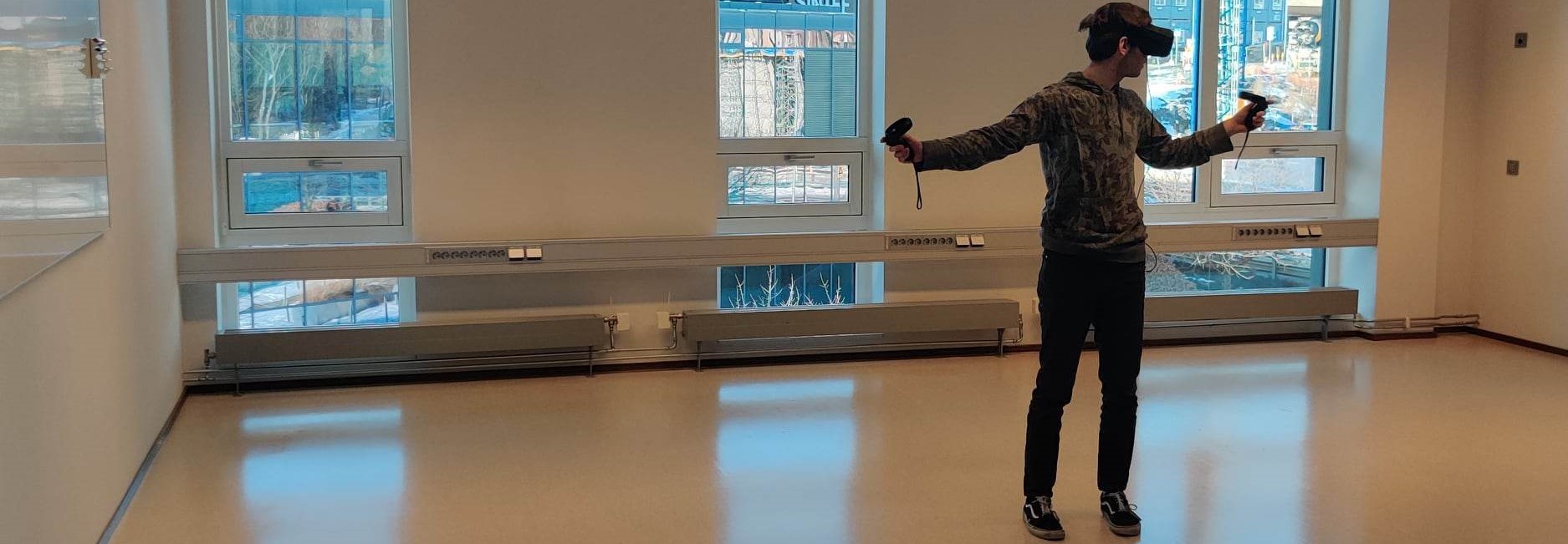What is Redirected Walking?
Virtual reality (VR) allows us to dive into virtual worlds and experience them in first person. Several of our senses can be used in this experience, and the senses of vision, sound and touch work reasonable well. What we can also achieve is the sense of our own body, the so-called proprioperceptive or kinesthetic sense.
When we used VR headsets today, programs react to the motion of the head in real time, and mimic those moves in the virtual world. To some extent, also hand and body pose can be tracked or deduced. However, most of the time, we sit in a chair and to move our first-person avatar. This feels unnatural and restrictive as it removes a key physical aspect of moving around in the virtual environment.
Wearing VR headsets, we can walk around in the real world, and by way of of tracking, this motion can be brought into the virtual world as well. This translation creates a high level of immersion but it is limited. The physical space in the real-world is limited by things such as walls and obstacles in the real world, where these don’t exist in the virtual world. At this point, Redirected Walking appears.
The term describes the ”perceptually unnoticeable virtual camera motion offset from a user’s movement”. Essentially, the system assesses the layout of the real and the virtual world, and works continually to rotate the virtual world’s coordinate system against the real-worlds coordinate system.
Specific question for this thesis
In this thesis, you will extend our knowledge of redirected walking. You will make use of the software that we have already developed and extend it to conduct new research. Our own developments are documented in the master theses listed in the sidebar.
The existing software makes use of Unreal Engine on Windows, OpenXR and SteamVR, with VR devices comprising Oculus Rift and Quest headsets as Vive trackers.
In our work so far, which is documented in the theses linked from the sidebar, we have focussed entirely on modifying the visual experience. Although humans are capable of navigating by audible and tactile clues when visual information is not available, our consciousness is generally dominated by visual information. This is especially true for redirected walking, where the sense one's own pose (proprioperception) must be tricked by modifications of the visible imagery. The candidates in our experiments have confirmed the dominance of the visual sense when the reacted well to video-only redirection although our experimenters were talking to them from fix locations and strong sources of noice could have given them clues about their true pose in the real world. We have also found in the literature that auditory clues in the virtual world can be used to enhance the acceptance of redirection.
The knowledge that we are missing concerns the threshold where this is no longer accepted by the player who is redirected. In this thesis, you will be exploring when external (real-world) audio sources are weakening or strengthening the player's ability to notice and accept the redirection that we perform. Having explored this, you will further explore how 3D sounds within the virtual world can counter these real-world sounds.
Learning outcome
Experience:
- in formulating, investigating and answering research questions
- with the development of audiovisual experiences with Unreal Engine
- conducting, evaluating and interpreting user studies
Conditions
We expect that you:
- have been admitted to a master's program in MatNat@UiO - primarily PROSA
- take this as a long thesis
- will participate actively in the weekly SINLab meetings
- are present in the lab and collaborate with other students and staff
- are interested in and have some knowledge of C/C++ programming
- are interested in conducting user studies
- are willing to share your results on Github
- include the course IN5060 in the study plan, unless you have already completed a course on classical (non-ML) data analysis
